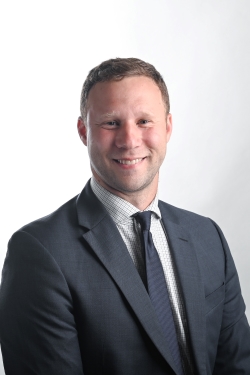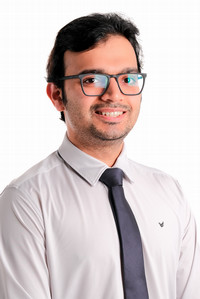About
The Emory Department of Radiology and Imaging Sciences is renowned for excellence in all subspecialties of radiology with residency training offered in both diagnostic radiology (DR) and nuclear medicine (NM), certified by the American Board of Radiology and the American Board of Nuclear Medicine, respectively. The Molecular Imaging in Medicine (MIM) Track takes advantage of this infrastructure to offer a combined diagnostic radiology and nuclear medicine molecular imaging residency track, resulting in dual board eligibility/certification, allowing residents to take full advantage of the training opportunities available to best prepare them for careers in molecular imaging.
The Emory MIM Track allows for at least 32 months of diagnostic radiology training and 16 months of nuclear medicine training. The MIM pathway allows for both a four-year (MIM4) and a five-year (MIM5) program in order to provide flexibility and to accommodate a wide variety of resident motivations for pursuing such a combined program. In an effort to prepare scientists who will not only practice but also advance molecular imaging and medicine, the MIM5 program includes a significant research component with additional dedicated research time and flexible (flex) time, which can be spent in diagnostic radiology or nuclear medicine research or didactic coursework. In contrast, the MIM4 program offers less flex time and no dedicated research time.
With regards to research, please note that the resident's primary responsibility is to clinical training and if this is not proceeding appropriately, the ramifications may include (but are not limited to) loss of research electives, assignment of flex months to remedial clinical rotations, and/or removal from the MIM5 track program.
Program Structure and Curriculum
We provide an opportunity for approximately two residents per year to enter the MIM5 Track program and two additional residents to enter the MIM4 Track program. These programs aim to provide comprehensive clinical training in both diagnostic radiology and nuclear medicine. The MIM5 program additionally allows for a substantial research component during residency.
MIM residents who plan to complete a Transition Year (TY) program at Emory before beginning advanced residency training can take advantage of the opportunity to take up to two months in diagnostic radiology and/or nuclear medicine rotations in the PGY-1 year, effectively freeing up future residency training months for additional flex time. MIM5 residents also can engage in a molecular imaging core rotation in the transition year, which is primarily aimed at identifying a faculty mentor to help guide future research endeavors.
A full program description is available in our dedicated MIM Resident Handbook.
Clinical and Research Tools
MIM Track residents benefit from these resources and more (full descriptions available in our manual):
- Facilities including but not limited to labs, classrooms, and libraries;
- Journal Club;
- Nuclear Medicine and Molecular Imaging Lecture Series;
- Visiting Professors, including named lectureships, in our department;
- Research in Progress (RIPs) conferences (approximately once a week); and
- Dedicated research education rotations.
Success Criteria
For All MIM Candidates
- Dual Board Certification
- Successful full-time employment in positions involving molecular imaging
Additional Criteria for MIM5 Candidates
- Funding for research (intramural/extramural);
- Invitations to review manuscripts for peer-reviewed journals;
- Peer-reviewed published abstracts and/or journal articles;
- Positive evaluation by research mentor;
- Selection for participation in research-related activities after competitive applications; and
- Research recognition.
Apply
Emory Diagnostic Radiology residents may apply to the MIM track in R1 or R2 by directly contacting Dr. David Brandon (david.brandon@emoryhealthcare.org), director of the MIM Track. Transfer residents coming in at R3 may be eligible depending on prior experience and can contact Dr. Brandon as well.
Program Leadership
Our Residents
MIM: Research and Education Learning Modules
As part of your nonclinical rotations, you will attend four one-week special learning modules where you will be introduced to a specific research lab and have self-directed learning. The Radiochemistry Discovery/Radiopharmacy module in the list below is mandatory, and you will choose the remaining three modules based on your interests. As a MIM4, you will have this opportunity in the fourth year. As a MIM5 you will do these rotations in your first year.
- Radiochemistry Discovery/Radiopharmacy (Current Director: Steven Liang, PhD)
- Imaging Biomarker Development and Translation (Current Director: Drs. David Schuster and Hui Mao)
- Advanced Imaging and Computational Analysis (Current Directors: Drs. John Oshinski and Jon Lewin)
- Translational and Interventional Imaging Implementation (Current Directors: Drs. Elizabeth Krupinski and Janice Newsome)
- Imaging Informatics (Current Directors: Drs. Nabile Safdar and Marly van Assen)
- Surgical Oncology Bio-Imaging Research Unit (Current Director: Dr. Lily Yang)










